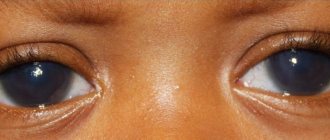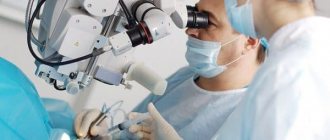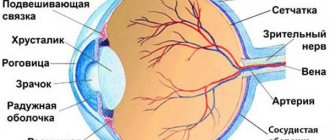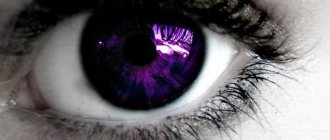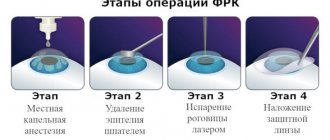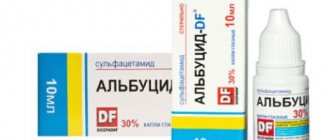Reasons for education
Bags under the organ of vision may appear as a result of fluid accumulation around the eye or in the periorbital area. Minor swelling is usually limited to the lower eyelid area, although it can occasionally affect the area around the entire eye. This phenomenon is mainly observed in patients after 40 years of age, when metabolic disorders in the body occur, and problems with the removal of fluid or adipose tissue are also noted.
The following factors can cause dark circles under the eyes:
- changes in hormone levels in the body;
- individual features of the structure of the skull;
- blood circulation disorders;
- living in a polluted environment;
- frequent stressful situations and emotional stress;
- increased load on the visual organs;
- decreased density of the membrane structures of the eyelids;
- various pathologies that are accompanied by fluid stagnation;
- abuse of tobacco, alcoholic beverages, salt and smoked products.
In some situations, the cause of hernias under the eyes can be allergic reactions, which are complemented by leaks in the subcutaneous capillaries.
Blood accumulates under the epidermis, which causes metabolic disorders in a certain area of the dermis and fluid accumulation.
Preparations for biorevitalization
Biorevitalization is carried out with the aim of moisturizing and nourishing the skin, improving its general condition, preventing and eliminating minor age-related changes. The essence of the procedure consists of numerous injections into the upper layers of the dermis, which attract water molecules and activate collagen production. As a result, the skin becomes more elastic, tightened and fresh in appearance.
For manipulations, special substances are used - biorevitalizants, characterized by a light, plastic structure and low concentration of HA. Products are produced under various brands; products such as:
- Restylane Vital. Suitable for young and older patients. Provides a prolonged effect for up to 8 months. There is an alternative to Restylane Vital Light for sensitive skin.
- Yvoire Hydro. It is characterized by high plasticity and is easily distributed under the skin.
Restylane Vital
Yvoire Hydro
Biorevitalization under the eyes should be carried out with extreme caution so as not to provoke additional swelling. Noticeable changes are achieved after a course of 3 to 5 procedures. They are stored for a maximum of six months.
Video: biorevitalization Restylane Vital
Types of defect
The following types of hernial formations are distinguished:
- blue circles are formed with lesions and injuries to the organ of vision, but may indicate heart pathologies;
- black bags under the eyes serve as a kind of signal from the body about extreme fatigue and the need for rest;
- yellow bags in most cases appear in people who have problems with liver function;
- white bags under the eyes are a sign of poor circulation and anemia, but they mainly appear in the absence of coloring pigments;
- red bags are formed in pathologies of an infectious-inflammatory nature, as well as in allergic reactions;
- purple bags under the eyes are observed with severe exhaustion of the body and especially if the diet does not contain sufficient vitamins and beneficial microelements.
In some cases, a bag may form under only one eye, which is a sign of unilateral sinusitis.
Types of gels
The filler is a gel-like substance. Drugs may differ in density, composition, and duration of action. A substance formed by a single component is called single-phase. When other ingredients are added to the base, a monophasic filler is obtained. The complex composition of the substance works comprehensively, but more often causes allergic reactions to the drug.
Gels can vary significantly in density. Softer substances are recommended to be used to correct minor problems in areas with thin skin. Thick gels are able to hold a large fold, but will be visible, “bulge out”, and weigh down the area with delicate skin.
According to the duration of action, non-absorbable and biodegradable substances are distinguished. The first one has an unlimited validity period. They are permanently present in tissues without decomposing. Absorbable gels have a short duration of action, gradually breaking down into biologically compatible particles and are eliminated during metabolic processes. The use of biodegradable materials is preferable. The substances allow you to achieve a more natural result of the procedure and do not deform the tissue.
Methods of surgical correction
Often, women and men undergo surgery to combat hernias in the area of the organ of vision. Thanks to this method, it is possible to achieve a positive effect after treatment and completely get rid of deposited fatty tissue.
Classic type of operation
Classic surgical intervention in the presence of formations under the eyes is carried out using a scalpel. First, the patient is given anesthesia, after which the specialist makes an incision with a scalpel. Typically, its location is the natural palpebral fold of the upper eyelid, and when correcting the lower eyelids, the area is slightly below the eyelash line.
With the help of special instruments, manipulations are performed to get rid of excess adipose tissue, and, if indicated, skin. After surgery, the incisions are sutured, and the rehabilitation period is 2 weeks.
Transconjunctival blepharoplasty
When performing transconjunctival blepharoplasty, the main emphasis is on correcting age-related changes in the area of the organ of vision. Such surgical intervention does not require strict medical indications and can be performed at the request of the person. The advantages of this procedure are considered to be low tissue trauma, the absence of scarring of tissues and sutures after the intervention, and the low likelihood of various complications.
One of the disadvantages of conjunctival blepharoplasty is its low effectiveness in cases of very advanced cosmetic defects.
The procedure is performed under local or intravenous anesthesia and lasts no more than an hour. A specialist makes an incision on the eyelid from the side of the conjunctiva using a laser or scalpel. After this, surgical instruments are used to reduce the hernia, tighten it, and get rid of excess tissue. This procedure does not require hospitalization of the patient and after a few hours he is discharged from the clinic.
Laser blepharoplasty
Eyelid surgery using laser beams is considered a minimally invasive and safe procedure, thanks to which it is possible to eliminate a cosmetic defect. During laser blepharoplasty, the skin is incised, after which fiber, muscle and other tissues are removed.
Laser beams serve as a source of large amounts of energy, which is converted into heat when they enter tissue. It is this effect of laser treatment that specialists use when fighting hernias that have formed in the eye area. Surgery to remove bags under the eyes using a laser can take the form of the following processes:
- Coagulation. It is the process of protein coagulation as a result of exposure to heat. This allows tissue dissection in the eye area to be performed using a bloodless method, since the vessels are immediately welded together during the procedure and blood is not released into the cavity.
- Ablation. This is the evaporation of tissues, due to which it is possible to reduce the volume of tissues in those areas where it is needed.
To perform laser blepharoplasty, choose those types of radiation that do not have any negative impact on the functioning of the organ of vision.
Endoscopy
Another way to remove bags under the eyes is endoscopic blepharoplasty. During this treatment, a surgical endoscope is used, which is inserted into the surgical site through intraoral incisions. Using this technique, it is possible to get rid of folds of fat that have appeared in the area of the organ of vision.
However, such surgical intervention is allowed only if there is no excess skin and there is no need to remove it. The main advantage of endoscopic blepharoplasty is the complete absence of visible marks after the operation.
What you can and cannot do after getting fillers under your eyes
Can:
• If hematomas or bruises appear after the injection of fillers, heparin ointments can be applied as recommended by a doctor.
• For the first week you should sleep on your back with your head slightly elevated.
• In the first 3 days after the procedure, you must maintain facial rest.
It is forbidden:
• After the procedure, you cannot use any hardware techniques for 1 month (ultrasound, microcurrents, photo-radiation, laser procedures).
• You cannot use facial expressions after the procedure during the first 24 hours.
• Do not touch or massage your face for 5 days after the procedure.
• Do not sleep face down on a pillow for 1 week.
• It is not advisable to use cosmetics during the first 5-7 days.
• You cannot visit baths, saunas, solariums, gyms, or swimming pools for 2 weeks.
Contraindications to surgery
There are the following contraindications to operations to remove hernias under the eyes:
- the patient has dry eye syndrome;
- period of pregnancy and breastfeeding;
- diabetes;
- somatic pathologies that are in the stage of decompensation or exacerbation;
- malignant tumors;
- high level of intraocular pressure;
- AIDS;
- diseases in which the blood clotting process is disrupted;
- damage to the endocrine system, heart and blood vessels, occurring in a severe form.
In addition, you will have to refuse surgery to remove hernias in the eye area in a situation where the patient has a fever, epileptic seizures and mental disorders.
Healing period
The procedure can cause swelling, local hemorrhage, and swelling of the area where the drug was administered. These are temporary phenomena that disappear in 2–3 days. It is not recommended to mask the manifestations with cosmetics. It is advisable to use an antiseptic until the puncture sites are completely healed.
To prevent complications and correct distribution of the drug, the cosmetologist will recommend:
- do not make sudden movements or bends;
- refuse to visit the bathhouse, solarium, gym;
- exclude the use of decorative cosmetics;
- avoid alcohol;
- postpone deep-impact procedures (peeling, polishing) for a month.
Most restrictions last 1–2 weeks . In the first days, it is also recommended to avoid visiting public places, swimming in pools and open water bodies. Strict hygiene is mandatory. This will help prevent infection from getting into the puncture wounds.
The cosmetologist will not be able to say how quickly the filler will rise. The body's reaction to a foreign substance is individual. The process usually lasts less than 2 weeks. If rehabilitation is delayed or irregularities form, the cosmetologist may recommend a massage.
The effect of the procedure is noticeable immediately. The final appearance of the corrected area is assessed after 2-3 weeks. The duration of the effect depends on the chosen drug, the characteristics of the body, and the patient’s lifestyle. Often the results of the procedure are noticeable within 6–12 months. Sometimes a prolonged effect of up to 2 years is observed.
Precautionary measures
To minimize complications, it is important to comply with the condition of no contraindications:
- problems with blood, kidneys;
- inflammatory processes on the skin;
- infectious diseases;
- oncology;
- tendency to keloid scarring;
- pregnancy, lactation;
- mental disorders.
Attention! The procedure is not performed if the patient is not feeling well. Blepharoplasty and deep peeling performed less than a month ago interfere with the procedure.
After the procedure, swelling and bruising are considered normal. Possible redness and increased sensitivity of the skin. Additional intervention by a cosmetologist requires the appearance of:
- granuloma;
- translucent gel;
- drug migration;
- lymph stagnation;
- hyperpigmentation;
- signs of allergies (itching, rash, redness);
- severe swelling;
- persistent pain;
- tissue necrosis;
- inflammatory process.
To prevent such phenomena, it is recommended to use high-quality drugs, maintain sterility, contact an experienced cosmetologist, exclude contraindications, and pre-conduct an allergy test.
Opinion of cosmetologists
Doctors often work as fillers. At the same time, they are in no hurry to prescribe intervention for any reason. It is important to correctly assess the problem so as not to have a negative effect. Cosmetologists offer patients different options for procedures to obtain the expected result of solving the problem.
Cosmetologists are selective when it comes to prescribing fillers; gels are not always the right choice.
The cosmetologist does not like to work with fillers; he offers patients a varied list of services with similar effectiveness: from mesotherapy to lipolifting.
The doctor is sure that blepharoplasty is needed to remove hernias, and the filling bags can be hidden with fillers.
